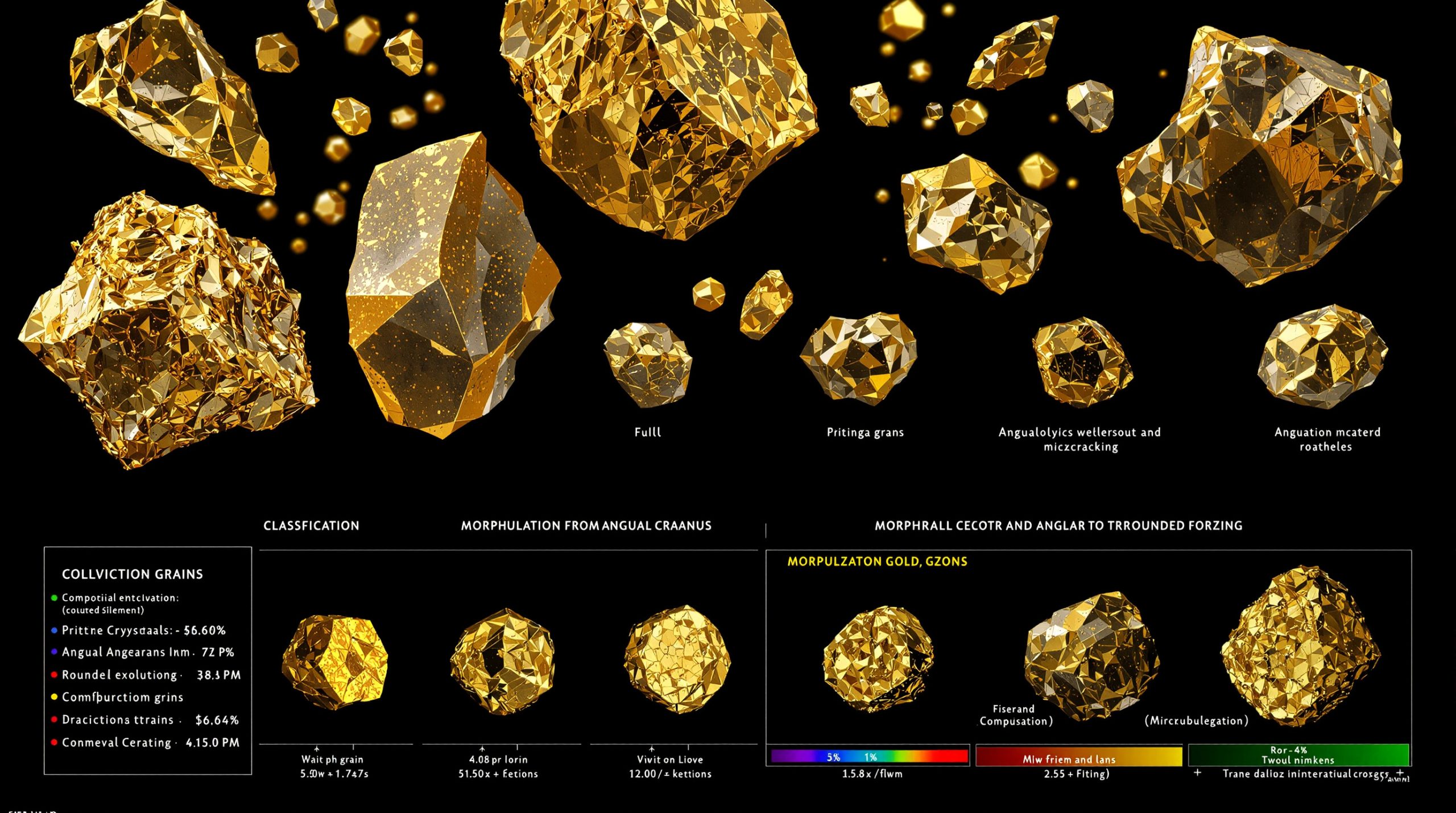What Caused the Lithium Market Collapse?
The Boom-Bust Cycle Explained
The lithium market experienced an unprecedented boom from 2020 to 2023, with stocks reaching astronomical valuations driven by compelling narratives around electric vehicle adoption. This surge created enormous wealth within the sector, with mining stocks skyrocketing on the back of government mandates for cleaner transportation and substantial investments in battery technology.
During this period, lithium prices reached a historic peak of approximately $80,000 per tonne in November 2022, creating what industry analyst Murray Dawes described as "shooting fish in a barrel… everyone was making money hand over fist." The prosperity was so dramatic that mining entrepreneurs like Tim Goyder of Chalice Mining achieved billionaire status during this frenzy, highlighting the magnitude of the boom.
What made this period particularly notable was the perfect alignment of multiple growth catalysts – technological advancements in battery chemistry, policy support for green energy, and substantial investment flows into sustainable technologies – creating a self-reinforcing cycle that pushed valuations to unsustainable levels.
The Painful Correction
Following this euphoric period, the lithium market entered a severe downturn lasting approximately two and a half years. This correction displayed all the classic signs of a commodity bear market:
- Mine closures and production suspensions across multiple continents
- Widespread unprofitability forcing operational restructuring
- Former lithium explorers pivoting to other resources like gold
- Price declines of 70-80% for major lithium stocks
- Project cancellations including Core Lithium's BP33 mine
The correction was exacerbated by slower-than-expected EV adoption rates in Western markets, with 2023 sales falling significantly below projections in both Europe and North America. Industry experts point to a combination of factors including charging infrastructure limitations, persistent range anxiety, and higher-than-expected vehicle costs.
"What we witnessed was a classic commodity cycle on steroids – euphoria followed by capitulation. The critical difference this time was the strategic price manipulation by Chinese producers, who maintained what I call a 'squirrel grip' on the market to solidify their dominance." – Murray Dawes
Chinese market dynamics played a particularly significant role in the downturn, with strategic price manipulation aimed at maintaining market dominance. As the world's largest lithium processor, Chinese companies were able to leverage their market position to influence global lithium investment, creating additional downward pressure.
Are We Seeing Early Signs of a Lithium Market Recovery?
Recent Price Action Indicators
Recent market movements suggest the lithium sector may be forming a bottom after its prolonged decline:
- Several major lithium stocks recently experienced 10% single-day gains following positive price movements in the Chinese spot market
- Key lithium stocks have fallen into what technical analysts call the "buy zone" (a 75-87% retracement from previous highs)
- Momentum indicators like the MACD (Moving Average Convergence Divergence) are showing positive turns for the first time in years on weekly charts
- Monthly buy pivots are beginning to appear on charts of major lithium producers
The technical bottoming process appears to be following historical commodity cycle patterns. Typically, after steep 80%+ declines, commodities experience a period of base-building that can last 6-18 months before establishing a sustainable uptrend.
What makes the current situation particularly noteworthy is the divergence between stock prices and industry fundamentals. While prices have collapsed, the underlying demand trajectory for lithium remains robust, especially when viewed through a 5-10 year lens rather than quarterly performance metrics.
Technical Analysis of Key Lithium Stocks
Pilbara Minerals (PLS)
Pilbara Minerals has fallen from $5.50 to approximately $1.00, representing an over 80% decline from peak to trough. However, several factors suggest it may be positioned for recovery:
- Recently saw a 10% single-day gain on increased volume
- Company CEO invested $1 million personally in company shares in early 2024
- Benefits from an exceptionally long mine life of approximately 30 years (verified via company reserve reports)
- Has made strategic acquisitions in South America during the downturn, taking advantage of depressed asset prices and valuable lithium brine insights
Pilbara's Pilgangoora operation maintains some of the highest-grade spodumene resources globally, with lithium oxide (Li₂O) concentrations consistently above 1.25%, placing it in the top quartile of global operations. This grade advantage provides significant production cost benefits that could prove crucial during recovery phases.
Mineral Resources (MIN)
Mineral Resources has declined from $95 to around $20, representing nearly an 80% decline from its peak:
- Has reached the bottom of its technical buy zone
- Shows early signs of momentum shift with positive MACD crossovers
- Carries higher debt levels than some peers, increasing risk profile
- Diversified with iron ore operations providing cash flow beyond lithium
MIN's diversification strategy has proven both a blessing and a curse – while iron ore operations provided some stability during lithium's collapse, the company's higher leverage has amplified downside risks. The debt-to-equity ratio stands significantly above industry averages, creating potential constraints on future growth opportunities.
Liontown Resources (LTR)
Liontown Resources has dropped from $3.20 to approximately $0.40, representing an over 85% decline:
- Recently recorded a monthly buy pivot on technical charts
- Previously attracted investment interest from Gina Rinehart
- Currently operating below profitability at current lithium prices
- Continues development of its flagship Kathleen Valley project
Liontown's situation highlights the precarious position of developing producers. While Kathleen Valley represents one of Australia's highest-grade undeveloped lithium resources, the company faces the challenge of ramping up production during a period of depressed prices, creating significant cash flow pressures.
Why the Long-Term Lithium Thesis Remains Intact
Multiple Demand Drivers Beyond EVs
While electric vehicle adoption hasn't accelerated at the pace some analysts predicted, multiple demand drivers for lithium market analysis remain strong:
-
Chinese EV Market: Unlike Western markets, China's electric vehicle market continues to expand rapidly, with 2023 sales exceeding 6 million units. Chinese manufacturers are now targeting global exports, with brands like BYD recording 62% year-over-year growth in international shipments.
-
Grid-Scale Battery Storage: Energy storage solutions for renewable power integration are gaining momentum, with global deployments exceeding 40 GWh in 2023. This sector alone is projected to require over 800,000 tonnes of lithium carbonate equivalent (LCE) by 2030.
-
Robotics Revolution: Emerging applications in robotics and automation could create substantial new demand for lithium-ion batteries. Boston Dynamics and similar companies are developing increasingly power-hungry platforms that require energy-dense power solutions.
-
Consumer Electronics: Ongoing demand from smartphones, laptops, and other portable devices provides a stable baseline consumption of approximately 100,000 tonnes of LCE annually.
"The market consistently underestimates how transformative the energy transition will be. While EV adoption faces temporary headwinds, the broader electrification trend across multiple industries creates a robust long-term demand profile for lithium." – Industry analyst comment
The diversification of demand sources represents a crucial evolution in the lithium market. During the previous cycle, the investment thesis relied heavily on personal EV adoption rates. The current landscape includes multiple growth vectors that collectively create a more resilient demand outlook.
Supply-Side Dynamics
The extended bear market has created favorable supply conditions for an eventual recovery:
- Project cancellations and delays have reduced future supply projections by an estimated 15-20%
- Capital investment in new lithium projects has declined dramatically, with financing for greenfield developments falling by over 60% in 2023
- Chinese attempts to control the market through price manipulation have limits, as domestic stockpiles are not infinitely sustainable
- Current prices are below the profitability threshold for many producers, forcing production cuts
The supply response follows classic commodity cycle patterns, with higher-cost producers suspending operations and expansion plans being shelved. According to industry estimates, approximately 30% of global hard-rock lithium production is currently operating at or below break-even levels, creating the conditions for capacity rationalization.
An additional factor often overlooked is the geological complexity of bringing new lithium resources online. The industry faces significant challenges in maintaining ore grades and minimizing impurities, particularly as operations scale. This technical reality means supply responses to price signals tend to be slower than in many other commodity markets.
Investment Approach for the Lithium Recovery
Risk Management Strategies
Given the high volatility in the lithium sector, prudent investment approaches include:
- Starting with half positions and adding as long-term trends confirm
- Setting clear stop-loss levels below recent major lows
- Focusing on companies with stronger balance sheets initially
- Diversifying across multiple lithium producers rather than concentrating in one
The asymmetric risk-reward profile of beaten-down lithium stocks makes position sizing particularly critical. Industry veterans recommend limiting initial exposure to no more than 1-2% of total portfolio value per position, with plans to scale up only after confirmation of trend changes.
"Position sizing is everything in cyclical commodities. The most common mistake investors make is going all-in too early and exhausting their capital before the real move begins. Start small, confirm the trend, then add." – Murray Dawes
For those seeking more conservative exposure, the Global X Lithium & Battery Tech ETF (LIT) provides diversified exposure across the lithium value chain, including miners, refiners, and battery manufacturers, reducing single-company risk.
Timing Considerations
The lithium recovery may not be immediate or linear:
- Expect potential sideways consolidation before a sustained uptrend
- Market consensus appears to anticipate lithium price recovery in 2025
- Stocks typically begin recovering 6-12 months before commodity prices fully rebound
- Value investors are likely to begin accumulating positions during this base-building phase
The 2016 lithium recovery offers instructive parallels. During that cycle, major producers began their uptrend approximately 7 months before spot lithium carbonate prices definitively bottomed. This pattern reflects the forward-looking nature of equity markets compared to physical commodity markets.
Historical commodity cycles suggest that after an 80%+ decline, recoveries typically unfold in three distinct phases: a bottoming process (3-6 months), a testing phase with potential retests of lows (4-8 months), and finally, a sustained uptrend. Patient investors who build positions gradually during the first two phases often capture the most significant returns.
Technical Signals to Watch
Key technical indicators that may signal a sustainable recovery include:
- Monthly buy pivots across multiple lithium stocks
- Long-term trend shifts in the Global Lithium & Battery Tech ETF (LIT)
- Decreasing selling pressure on high-volume days
- False breaks below major support levels followed by strong recoveries
Technical analysts point to the importance of volume confirmation during the early stages of recovery. Genuine bottoming processes typically feature declining volume during final sell-offs, followed by significantly increased volume during initial rallies – a pattern beginning to emerge in several key lithium names.
Additionally, monitoring insider buying provides valuable signals. When company executives commit significant personal capital to purchases, as seen recently with Pilbara's CEO, it often indicates confidence in valuation disconnects between market perception and operational reality.
Broader Market Context for Resource Investors
U.S. Market Influences
The performance of U.S. markets continues to influence Australian resource stocks:
- The S&P 500 has maintained its uptrend despite earlier concerns about potential peaks
- Weekly buy pivots have consistently formed, preventing any significant corrections
- Trump's recent tax legislation could impact markets in either direction
- Bond market reactions to fiscal policy will be critical to watch
The correlation between U.S. indices and Australian resource stocks has strengthened during periods of market stress, with global risk sentiment driving capital flows. Particularly notable is the relationship between U.S. 10-year Treasury yields and mining stock valuations, with rising real yields historically creating headwinds for commodity producers.
Recent Federal Reserve commentary suggests a potentially more accommodative monetary stance in coming quarters, which historically has provided tailwinds for commodity sectors. However, this relationship remains complex, with inflation expectations and growth outlooks creating competing influences.
Australian Small Cap Opportunities
Beyond the major lithium producers, opportunities exist in the broader Australian small cap space:
- Companies like Regal Partners have been heavily sold off but show signs of recovery
- Funds under management metrics suggest some investment firms are undervalued relative to their assets
- Market recovery has helped improve performance fee outlooks for asset managers
- Technical false breaks below major support levels can create compelling entry points
Regal Partners recently announced a $35 million performance fee, triggering a 10% rally and potentially signaling a turnaround in fund manager fortunes. The company's share price remains significantly below historical averages when measured against funds under management.
For resource-focused investors, specialized small-cap exploration companies present high-risk, high-reward opportunities. Those with established resources but delayed development timelines due to market conditions may offer particular value, especially when backed by strong management teams with proven development experience.
FAQ: Lithium Market Recovery
How long might the lithium market recovery take?
While timing market recoveries is challenging, historical commodity cycles suggest that once lithium prices begin firming, it could take 12-24 months for a full recovery to materialize. Stocks typically begin recovering before the underlying commodity prices fully rebound.
The recovery trajectory will likely depend on several factors:
- Speed of production cuts from existing operations
- Demand growth trajectory, particularly in China
- Level of project cancellations and their impact on medium-term supply
- Broader economic conditions affecting capital availability
Which lithium stocks offer the best risk-reward profile?
Companies with stronger balance sheets, lower production costs, and diversified operations generally offer better risk-reward profiles. Pilbara Minerals, with its long mine life and strategic South American acquisitions, may present a more favorable profile than highly leveraged alternatives.
Investors should consider several factors when evaluating lithium stocks:
- Cash operating costs per tonne (lower quartile producers have greater resilience)
- Debt-to-equity ratios (lower leverage reduces financial risk during prolonged downturns)
- Resource quality (higher grades typically correlate with lower production costs)
- Offtake agreements (secured sales channels provide revenue visibility)
What could derail a lithium market recovery?
Potential risks include:
- Further delays in global EV adoption
- Continued Chinese price manipulation through strategic reserve releases
- Technological disruptions reducing lithium demand (e.g., sodium-ion batteries)
- Broader economic recessions impacting capital-intensive purchases like electric vehicles
The most significant near-term risk remains Chinese market dynamics. As the world's largest lithium processor and consumer, China's policy decisions and inventory management strategies can create significant price volatility, potentially extending recovery timelines.
How does lithium extraction differ globally?
Lithium is primarily extracted through two methods, each with distinct economic and environmental profiles:
-
Hard rock mining (predominantly in Australia): Involves extracting spodumene ore, which typically contains 1.0-1.5% lithium oxide. This method offers faster time-to-market but generally higher operating costs. Recent Australia lithium innovations have improved extraction efficiency.
-
Brine operations (primarily in South America): Involves pumping lithium-rich brines from underground reservoirs into evaporation ponds. This method typically has lower production costs but longer development timelines (3-5 years) and greater environmental scrutiny regarding water usage.
Australia currently dominates global production through hard rock mining, accounting for approximately 52% of supply, while South American brine operations contribute roughly 26%, with the balance coming from China and emerging producers.
What role will battery recycling play in the lithium market?
As battery recycling technologies advance and more EV batteries reach end-of-life, recycled lithium will become an increasingly important source of supply. However, significant impacts on primary lithium demand are still several years away given the lifecycle of current batteries.
Current recycling technologies can recover 95-97% of lithium from spent batteries, but the process remains energy-intensive and economically challenging at current prices. Major automakers are establishing closed-loop recycling programs, but the industry expects recycled lithium to comprise no more than 10-15% of total supply by 2030.
The emergence of direct lithium extraction (DLE) technologies may eventually bridge the gap between traditional mining and recycling, potentially enabling more efficient recovery from lower-grade resources and processing waste streams. Recent developments in Thacker Pass lithium recovery and battery-grade lithium refinery technologies demonstrate promising advances in this area.
Disclaimer: This article contains market analysis and investment information that should not be considered investment advice. All investments carry risk, and past performance is not indicative of future results. Investors should conduct their own research and consult with financial advisors before making investment decisions, particularly in volatile sectors like lithium.
Want to Catch the Next Major Mineral Discovery?
Discovery Alert's proprietary Discovery IQ model delivers instant notifications on significant ASX mineral discoveries, turning complex market data into actionable investment opportunities. Visit the dedicated discoveries page to understand how historic mineral discoveries have generated substantial returns for early investors.




